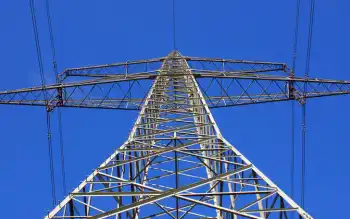Explanation of blackout falls short, critics say
By San Diego Union-Tribune
CSA Z462 Arc Flash Training - Electrical Safety Essentials
Our customized live online or in‑person group training can be delivered to your staff at your location.

- Live Online
- 6 hours Instructor-led
- Group Training Available
The California Independent System Operator blames operator error for the blackout.
It said it canÂ’t explain why, when San Diego Gas & Electric Co. scheduled the biggest power plant in the county to go offline at midnight, a worker didnÂ’t notice that would leave the county without enough locally generated power.
Nor can it say why its employees then decided to order SDG&E to cut power to hundreds of thousands of customers, even though its rules didnÂ’t require such a drastic measure.
The ISO said it shared the results of its investigation with the Western Electricity Coordinating Council. The council, which oversees the electricity grid in the West, plus parts of Canada and Mexico, was satisfied with the results, ISO spokeswoman Stephanie McCorkle said.
State Sen. Christine Kehoe, D-San Diego, isnÂ’t satisfied.
“We want a thorough investigation and we want as much public disclosure as possible,” she said.
Kehoe sent a letter to the council asking for more details.
“The public has a right to know exactly what happened and what steps have been taken since April 1st to protect California from future outages,” she wrote.
Michael Shames, who heads UCAN, the Utility ConsumersÂ’ Action Network, said the ISOÂ’s explanation is lacking.
“It doesn’t come close to addressing the issues that we asked them to address,” he said.
He has asked the organization to describe the errors, explain why local workers couldnÂ’t challenge the decision to shut off the power plant, disclose operator logs and publish information about how much power the ISO believes can be imported into San Diego.
McCorkle said her agency has been open about what happened.
“We have been very descriptive in the two errors that occurred,” she said. “We have communicated with any entity who wanted to delve into what happened on April 1.”
The problem is that the mistakes were mental errors for which one worker was fired and two were suspended, she added.
The first mistake happened when ISO workers followed through on an SDG&E request to shut down a 600-megawatt plant in Otay Mesa for economic reasons. While the utility schedules when the plants it owns or has under contract should run, itÂ’s up to the ISO to issue the orders to turn them on or off.
In this case, the plant was the biggest one operating in San Diego at the time, and left the county without enough local generation — something that could have been avoided.
“They should have known,” McCorkle said. “There was adequate information. The operator should have made the correct call.”
The second error was in thinking the mistake had to be corrected within 20 minutes, even if that required cutting power to customers.
McCorkle said her agency has taken steps to prevent a repeat, including additional training and audible alarms that tell grid operators when an area is getting close to not having enough local power.
“What else can we do?” she said.











